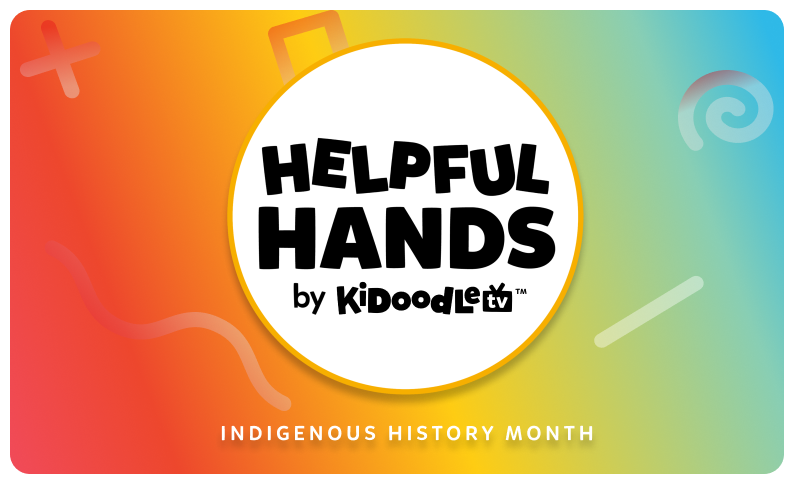Content Warning: the following mentions Indian Residential Schools, trauma, which may be triggering or distressing to readers, discretion is advised.
Annually in Canada, June commemorates Indigenous History Month and June 21 is National Indigenous Peoples Day, a time to recognize, honor, and celebrate the rich heritage and diverse cultures of First Nations, Inuit and Métis communities.
There are many ways to celebrate Indigenous People’s Day and Indigenous History Month with your family, along with tips on how to navigate difficult conversations around colonialism, historical trauma, and how individuals can work toward Truth & Reconciliation.
1. Find out when and why we celebrate National Indigenous Peoples Day
It’s no coincidence that Indigenous Peoples Day lands on the Summer Solstice. In fact, the Government of Canada, in cooperation with Indigenous organizations, chose June 21, the Summer Solstice, for National Aboriginal Day, now known as National Indigenous Peoples Day. Indigenous peoples and communities have celebrated their culture and community for generations during the annual Summer Solstice, the official start to the Summer season and the longest day of the year. Learn more about the United Nations Declaration on the Rights of Indigenous Peoples.
2. Know Your Local Indigenous History
This is a great time to ask your children about the first inhabitants of your community. Pose questions like “Whose land do we live on?” Can your little ones tell you what tribes and/or nations were located where you live?
What language(s) did they speak? Do they still have a presence in your community? If so, how can you support them? If not, how can you honor them?
If you don’t know the answers to some of these questions, make sure you and your family take the time to research and find out with these printable fact sheets for ages 8 to 11.
3. Learn About Land Acknowledgement and why it’s important
The Calgary Public Library has put together this helpful video on land acknowledgement to answer common kid questions, like, what is a land acknowledgement? Why do we acknowledge land? How do we acknowledge land? And more ways to honor indigenous communities in your day-to-day life.
4. Talk to your children about the history of Indian Residential Schools and Truth and Reconciliation Commission of Canada
Part of the path to reconciliation is recognizing the horrific history of Candian and Indigenous relations. Over 150,000 Indigenous children were separated from their families and forced to attend residential schools. The Government of Canada will fund up to $27 million over 3 years to support Indigenous partners and communities in a range of activities, including school-specific research and knowledge-gathering on the children who died at residential schools and their burial places. Read more on how to talk to your children about the history of Residential Schools.
5. Discover the history of Totem Poles
Totem poles are monuments created by First Nations of the Pacific Northwest to represent and commemorate ancestry, histories, people, or events. The word “totem” comes from the Algonquian word odoodem meaning “his kinship group.” This means a family or a clan.
Read more on fun Totem Pole Facts for kids
6. Celebrating Indigenous Peoples in Canada: FREE Learning and activity guide
The Government of Canada has created an entire free activity guide for celebrating Indigenous History Month & Indigenous Peoples Day with kids and families. Download the full guide including activity sheets, games, short stories, videos, lesson packs and more!
7. Watch a Panel discussion with Indigenous Knowledge Keepers
The term “Knowledge Keeper” or “Traditional Knowledge Keeper”refers to someone who has been taught by an Elder or a senior Knowledge Keeper within their community. Watch Ministers Bennett, Vandal and Miller as they discuss First Nations, Inuit and Métis cultures, traditions and the future with Indigenous Knowledge Keepers here.
8. Watch a free film made by Indigenous Filmmakers through the National Film Board of Canada’s free virtual program dedicated to the trailblazing work of the Indian Film Crew (IFC), the NFB’s first all-Indigenous film unit.
Cinematheque, a non-profit film institute and media education center in Vancouver, BC, is partnering with the National Film Board of Canada to offer virtual screenings of Indian Film Crew productions, honoring films produced and created by Indigenous voices. The virtual screening launches Monday June 21, on Indigenous People’s Day
9. Learn About how Indigenous Communities First Made Medicine from Nature
Did you know that it was First Nations people who cured scurvy, which heavily impacted European settlers who arrived in Canada. The First Nations knew that the illness was not an infection, but the result of poor nutrition (a shortage of vitamin C in the diet). Learn more about how many communities made medicine from natural resources.
10. Read the Story: The Great Festival of Light and more stories from Indigenous Authors
The Great Festival of Light, is the story of the Summer Solstice. June 21 has been an indigenous celebration of culture and heritage, dating back centuries. Read this story about the animals and humans who come together to celebrate the joy of the summer solstice, also known as National Indigenous Peoples Day.
11. Support Indigenous Businesses and Communities
Check out shopfirstnations.com a website dedicated to driving consumer support for Indigenous businesses across Canada. Browse and shop from Indigenous-owned businesses directly.





